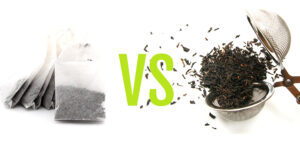
Plastics In Tea Bags
LOOSE LEAF versus TEA BAGS
Background
Tea bags came into the world back in 1903 A.D and the first modern tea bags were hand-sewn fabric tea bags. These tea bags were commercialized around 1904 by New York tea merchant Thomas Sullivan. Later on it became popular in many markets around the world due to the convenience of brewing compared to loose leaf tea. There are many types of tea bags namely single chamber, double chamber, pyramid and pot tea bags. Out of these, pyramid tea bags are mainly manufactured with nylon material. Other tea bag types are made with filter paper. Pot tea bags don’t contain a thread or a tag. When we look at the tea bag, filter paper is the first thing comes to our minds, but who would have thought that even filter paper tea bags contain a little bit plastics. This should be a major concern since tea bags are brewed with boiling or hot water.
Plastics in Tea Bags: Actual Picture
As per the viral video released by BBC, it’s a surprise to know that most tea bags contain up to 25% plastics! According to a study published by a group of Canadian scholars in the American Chemical Society’s Journal of Environmental Science and Technology, steeping one nylon or polyethylene terephthalate (PET) pyramid-shaped tea bag at brewing temperature releases almost 11.6 billion microplastics and 3.1 billion nanoplastics into the brew. This is quite a lot compared to other foods. According to Nathalie Tufenkji of McGill University in Quebec, “Table salt, which has relatively high microplastic content, has been reported to contain approximately 0.005 micrograms of plastic per gram salt. But an average tea cup made with a tea bag contains nearly 16 micrograms of microplastic.
Pyramid Tea Bags
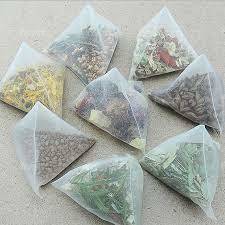
The Tea Association of the USA, Inc. immediately gave a formal reply assuring consumers “that tea brewed with tea bags is safe to consume.”
Tea brands around the world fielded many questions from concerned consumers. The results were questioned by scientists and scholars who suggested that airborne contaminates may have raised the count (citing the non-reassuring fact that in USA up to one third of household dust is microplastic). Critics also mentioned that slicing open the tea bags to release tea prior to test may have influenced the count (but McGill’s scholars emphasized that a control sample showed no difference in the amount of leachate compared to uncut tea bags).
The UK’s sixth biggest tea brand, “Clipper Tea” has claimed that its bags are free from plastics. But when looking at the small print, it says the company uses a bio-plastic to seal tea bags – made from a plant material rather than polypropylene.
Out of the six largest tea brands in UK, one of the companies which claims its standard teabag is free from plastics is Pukka – that says it uses a stitch of cotton instead of heat-sealing company’s tea bags.
Effect on Human Health
The conventional tea bags consumed by many tea drinkers around the world are still mostly made of filter paper. In order to seal up and keep the shape of tea bag inside boiling water, a petroleum-based plastic polymer “polypropylene” is added. Even though the amounts of plastic found in tea bags is minimal — and will vary dependent on manufacturers — it adds up to quite a bit when you look at the big picture, consuming on average 2 – 3 cups daily over a number of years!
Filter Paper Tea Bags
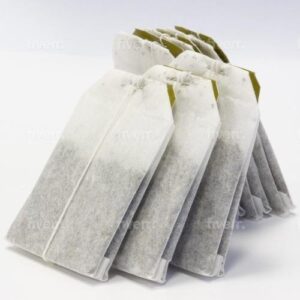
Same as most other plastics, polypropylene is known to affect negatively on:
- The body’s endocrine system
- Immune system
- Fertility of men and women
- Nervous system
- Cancers
- Hearing
Effect on Environment
Because of the plastic content, conventional tea bags are unable to decompose completely. This makes them an undesirable option for compost material and the environment. So if you’re a nature lover, you can utilize used tea bags in many ways. For example, used tea bags may assist to improve the appearance of your eyes by minimizing dark puffiness, dark circles and redness. Used tea bags can also be used as a cleaning agent and deodorizer.
So these plastics in tea bags are harmful to all humans, living beings and to the environment.
Better Alternatives
Due to public pressures, most tea companies are now utilizing biodegradable material polylactic acid (PLA) that derived from corn starch to seal tea bags. This material is also known as soilon. Soilon is supposed to break down in a home compost bin, but it will consume extra bit of time to decompose. It is highly recommended that this waste goes into an industrial civic composter. Bio-plastics are at least two or three times more expensive compared to nylon and PET, but they are more sustainable alternatives to traditional plastics and at present preferred by brands selling premium pyramid tea.
PLA Tea Bag
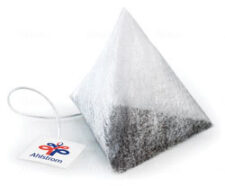
According to Prof Jenna Jambeck, an environmental engineer at the University of Georgia, like oil-based plastics, if bio-plastics like polylactic acid (PLA) reach the ocean those can cause a danger to marine life since they “won’t biodegrade in the ocean”. So even bio-plastic is not a 100% sustainable option at all. But indeed, it’s a better option compared to petroleum oil-based plastics.
According to Joe B. Grubbs III, Ph.D., senior polymer scientist at Danimer Scientific, “PHA [polyhydroxyalkanoate] is definitely a potential candidate for a biodegradable tea bag,” PHAs are manufactured by bacterial fermentation in the natural world (opposite to synthetic polyester).
Ideal Solution: Loose Leaf Tea
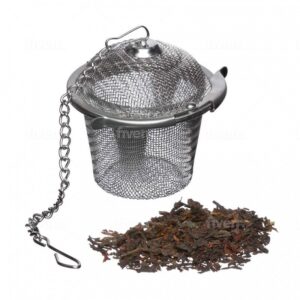
The best way to avoid plastics in tea bags is to consume organic loose leaf tea. If you’re still seeking convenience of brewing loose tea, you can use a good quality stainless steel strainer or infuser. Also make sure not to use any tea utensil made with plastics such as cups, jugs and infusers.
Organic loose leaf tea can be made just as conveniently and it’s typically more flavorful because the tea leaves haven’t been ground to dust to fit into a tiny plastic-riddled tea bag!
Loose leaf tea is also a more economical choice since they are priced by weight while tea bags are priced per bag. You can also reuse loose leaf tea to make a second cup to cut expenses and waste.
No matter whether it’s black, green, oolong, white or herbal, it’s always better to prepare a steaming tea pot with organic loose leaf tea.





